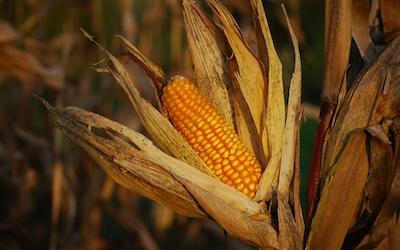Bayesian Spatial Models for Projecting Corn Yields
Corn production is an important sector in the United States, and the effects of climate change on this industry have a considerable impact on the world economy. Using two Bayesian statistical models, each addressing county-level impacts differently and integrating them with climate model outputs, our study explores the ways in which climate change affects corn yields. This approach fills gaps in previous research by accounting for spatial correlation and parametric uncertainty. One model indirectly incorporates spatial correlation with a random effect for each county (time-constant county intercepts), while the other directly tackles spatial correlation using spatial basis functions (Projection-based Intrinsic Conditional Auto-Regression or PICAR), a novel approach in projecting corn yields. Additionally, we compare statistical models fitted with different gridded temperature data products: METDATA and TopoWX, which feature weather station and satellite data. To derive detrended corn yield projections for 2020–2049 and 2069–2098, we utilize downscaled and bias-corrected CMIP5 climate model projections.
The choice of spatial effects representation and temperature data source influences modeled relationships and prediction accuracy, emphasizing the importance of factoring in uncertainty in model selection and weather data sources for accurate corn yield projections. Both the spatial basis function (PICAR) and county intercepts models exhibit similar impacts of weather factors and predictive capabilities, albeit the PICAR model projects significantly lower losses in crop yield with lower uncertainty than the county intercepts model. While the PICAR model improves computing efficiency, the county intercepts model has somewhat higher predictive accuracy. Furthermore, swapping METDATA temperatures for TopoWX temperatures results in similar weather variable impacts and forecasting abilities, but TopoWX temperatures increase the temperature's influence on corn yields. Our projections for the periods 2020–2049 and 2069–2098 confirm the downward trend in average corn yields observed in previous studies, yet they vary in the extent of the decline and the uncertainties involved.
Climate change is predicted to impact corn yields. Previous studies analyzing these impacts differ in data and modeling approaches and, consequently, corn yield projections. We analyze the impacts of climate change on corn yields using two statistical models with different approaches for dealing with county-level effects. The first model, which is novel to modeling corn yields, uses a computationally efficient spatial basis function approach. We use a Bayesian framework to incorporate both parametric and climate model structural uncertainty. We find that the statistical models have similar predictive abilities, but the spatial basis function model is faster and, hence, potentially a useful tool for crop yield projections. We also explore how different gridded temperature datasets affect the statistical model fit and performance. Compared to the dataset with only weather station data, we find that the dataset composed of satellite and weather station data results in a model with a magnified relationship between temperature and corn yields. For all statistical models, we observe a relationship between temperature and corn yields that is broadly similar to previous studies. We use downscaled and bias-corrected CMIP5 climate model projections to obtain detrended corn yield projections for 2020–2049 and 2069–2098. In both periods, we project a decrease in the mean corn yield production, reinforcing the findings of other studies. However, the magnitude of the decrease and the associated uncertainties we obtain differ from previous studies.

